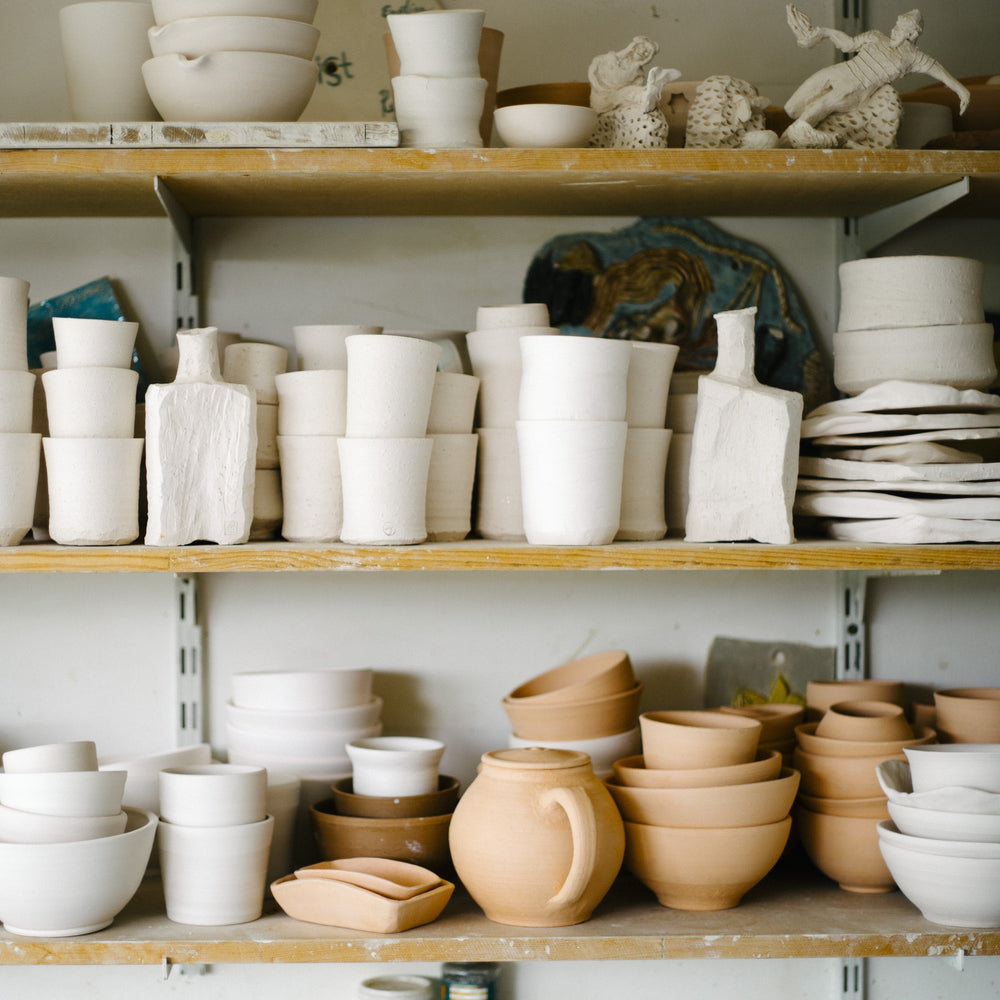
Disclosure: This post contains some affiliate links. I may earn a small commission at no extra cost to you, supporting my blog and content creation. Thank you!
---
In recent times, I've received a flurry of emails from fellow air dry clay enthusiasts, all asking the similar intriguing questions: "Can you craft functional homewares like candleholders, vases, and more using air dry clay?" I get asked about vessels that will hold water or be placed outside. While I truly wish I could offer a resounding "yes" to fulfill all your sculpting aspirations, the reality is a bit more complex.
Why can't I make pottery out of air dry clay?
The term "pottery" typically encompasses ceramic ware that undergoes firing in a kiln. It spans a vast array of items, including vases, mugs, pots, and dishes. Although some use the term pottery for sculptures, but in this discussion, I'm referring specifically to homewares meant for practical use.
First, let's delve into the critical characteristics that make traditional ceramic pottery suitable for daily use:
When clay is fired in a kiln, it undergoes a process called vitrification, turning it into a hardened, non-porous material. While fired clay on it’s own could be used to hold water, it is still slightly porous and would eventually get absorbed into the clay body and weaken it over time (possibly causing it to break). Think of a terracotta pot – left outside they often crack because of the water they have absorbed from the plants they hold. Glaze is the thing that creates a full waterproof seal on the clay, making a vessel ideal for holding liquids.
Air dry clay* lacks these features and so it will never be waterproof enough to hold any kind of liquid. Many clays would simply absorb the water and break apart, leak, or at the very least warp.

Air dry clay for outdoor use
Using air dry clay for outdoor projects raises similar concerns. Just as it's not suited for holding water, it may not withstand the elements in most climates. Theoretically, in a desert climate, it might survive outdoors, but it's still a risk.
Issues with making mugs or vases out of air dry clay
As you read from the description above, air dry clay lacks the ability to achieve a watertight seal. Over time, it can not only dissolve when exposed to moisture, but also release clay particles into the liquid it holds.
Risks of creating candle holders from air dry clay
Many air dry clays contain paper content, posing a potential fire hazard when used for candleholders. I would not recommend this unless it is very clear that the air dry clay will not be flammable once it’s dry.
What pottery can I make with air dry clay?
While crafting functional homewares like vases or mugs isn't feasible, air dry clay does have its strengths. It's well-suited for crafting decorative pieces and small display bowls for items like rings or jewelry. You can of course create vases (for dried flowers for example) and other vessels as long as they will not hold water. However, remember that air dry clay will always be softer and less durable than traditional ceramics, making it more prone to dents and damage.
![]()
Exploring Alternatives:
If your heart is set on crafting pottery, but traditional ceramics aren't an option, consider these alternatives:
1. Epoxy Clay: Epoxy clay cures to a harder finish than air dry clay and is waterproof. Brands like Apoxie Sculpt (comes in colours), and Milliput are popular options.
2. Polymer Clay: When properly baked, polymer clay becomes waterproof. Be sure to use the baked type, not air dry polymer clay (some artists like Ellen Jewett use this clay to great effect), to ensure a non-porous finish. Popular brands include Sculpey and Fimo.
 Painting air dry clay gives you lost of options for finishes
Painting air dry clay gives you lost of options for finishesDecorating Air Dry Clay Pottery:
If you decide to paint your air dry clay creations, keep in mind that water and paint don't mix well over time. Acrylic paints are your best choice, as they form a protective plastic layer, but they will still likely get damaged overtime from use. Varnish might help slow that as well. You might want to consider using clays that are already coloured, like Apoxie Sculpt or Polymer Clay because they do not require paint.
In conclusion, air dry clay is a fantastic medium for sculpture, but it's essential to recognize its strengths and limitations when creating functional homewares. Making informed material choices will lead to successful and satisfying artistic results.
* This is an extremely broad term for a very large group of products. I can only speak to the clay brands I have used.
What's Next?
Understand the difference between air dry clay and epoxy clay
Discover my favourite materials and tools for air dry clay sculpture

